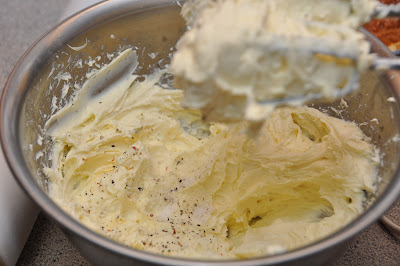I try to take a more active part in their nutrition as I know it helps restore and properly nourish their fatigued body. I try to follow whatever nutrition tips their coach gives, and do some more research on the Net on my own. But the operative word is really TRY. It is a struggle as I take on so many different roles…
Far be it that proper nutrition can assure you that your young athlete will turn into a champion - No! For only proper training and self-discipline can do that. Taking care of your kids' nutritional needs mean, however, that you are raising a healthy child who has the FULL potential to develop into a confident and winning athlete.
 |
| With the team's trophy after her team was declared overall champion in the girls category |
 |
| With some of her team mates |
Here are some of the nutrition guidelines that I try to follow for my kids, which might also be useful for you:
1. Carbo load one week or least three days before the event.
Carbohydrates are the starches and sugars that provide the energy our bodies need to function and grow. There are two types of carbohydrates: Simple and Complex.
SIMPLE CARBOHYDRATES are commonly referred to as sugars. Examples of these include fruits, honey, candies, and other processed sugars. They are very easy to digest and get into the blood stream very quickly. This enables the body to benefit from a burst of energy as the body breaks down the sugar and pulls the nutrients out of it. Athletes can benefit from moderate amounts of honey and fruits DURING the event day itself.
COMPLEX CARBOHYDRATES are most commonly referred to as starch and fiber. They are more difficult for the body to break down rapidly, which ensures a longer, more sustained supply of energy to the body. For the purpose of Carbo-loading before an event, what we need to stock on is the COMPLEX kind.
Our muscles normally store only small amounts of glycogen, and usually, this isn’t a problem. But if your kids start exercising at high intensity, such as when running or swimming, their muscles run out of glycogen which can result to diminished stamina and performance.
Taking in extra doses of carbo 3-5 days before the tournament will enable your kids to super-maximize the storage of glycogen muscle fuel prior to the competition. Indeed a pasta dinner the night before a competition is still a great idea, but it takes extra carbs for a few days before the tournament to effectively carbo load.
2. Make them go to bed as early as possible, especially if they are getting up early.
The night before a meet, my kids always sleep early. If it means checking up on your kids' room constantly to make sure that they are asleep, then that's what you have to do. No partying or movies the night before a big event.
3. Eat well the morning of the event
The general advice for eating breakfast before a competition is to consume a carbohydrate-rich meal about 2–4 hours before the action begins. This will help top off the glycogen stores and ensure a steady supply of blood glucose during competition.
4. Recovery between events After every event, your first priority is your kids’ recovery. Your window of opportunity for recovery starts as soon as their first event is over. Glycogen stores in their bodies need reloading, and fluid and sodium losses need to be replaced.
The waiting time between competitions will vary, so it’s wise to be prepared for any possibility. In addition, tournament and meet venues sometimes have limited access to food and fluids. What could be worse than knowing that the food concessionares have ran out of food to serve. So don’t just hope for the best: Plan ahead. That means packing your bag and cooler with the types of fluids and foods your kid will need to keep hydrated and fueled throughout the day.
If the competition happen to extend to lunch, a carbohydrate-rich meal with some lean protein is appropriate. Steer clear of slower-to-digest fried, fatty, or high-fiber foods. A few of the good choices are sandwiches, pastas, rice with a viand of lean meat.
If the interval between competitions is just short or uncertain, “grazing” is the best recovery strategy. Grazing involves consuming smaller portions of foods and beverages that are quickly and easily digested. Again, the focus should be mostly on carbs with some lean protein. Examples are energy bars, sports drinks, yogurts, fruits.
In our case, I usually bring sports drinks, bananas, and honey. You can experiment and try to come up with a combination on what works for your kids. It is a general rule however to avoid products that are high in sugar during competition day. The kids will get the sugar rush, followed by a second half crash! I find that using honey works well if they need that sugar pick me up.
5. Maintain hydration
It’s also wise to make sure that they are well-hydrated. I do this by reminding them to drink fluids as soon as they wake up and continuing to drink regularly during the course of the tournament - even if they do not feel thirsty.
 |
| Alaska Football Cup at the Ayala Alabang Football Field |
here is what we usually have in our snack bag:
For snacking: sports drink (Blue Bolt by Gatorade, but any brand will do), honey, banana
For Lunch: pasta salad
I will share with you our favorite pasta salad recipe. My kids love it for the flavor, and I love it because it is nutritious and more importantly VERY EASY to prepare. This is what I also usually serve them for breakfast on the day of a competition, since it is already a given that I do not favor waking up a minute earlier than necessary, and competitions usually require us to be at the event early in the morning. I purposely steered clear of tomato-based sauce for fear of food spoilage.
What you need:
- Fusilli (but you can use any pasta of your choice)
- 1 can of brined tuna chunks, drained
- 3 hard-boiled eggs, chopped
- Several pieces of sliced Italian sausage
Toppings:
- Sour cream or unflavored yogurt *
- Japanese mayo
- chunks of cheese torta (the fusion of tomato and the basil pesto makes ALL the difference in taste. If you do not have this, fret not, just buy a bottled pesto sauce; it’ll do)
*the addition of sour cream or yogurt is totally optional. I only put it in mine to make sure the salad stays hydrated without adding of too much of the fattening mayo; it's a PLUS that they get the benefits of the yogurt, too.
Layer all the ingredients in this order: pasta, tuna, egg, sausage, cheese torta (click here for the recipe). Bring the yogurt and Japanese mayo in their original container and pour when your child is ready to eat. Pack everything inside a cooler. As you can see, it is fuss-free and a complete meal in itself. Pasta provides the carbo; eggs, tuna, cheese torta and yogurt gives protein; the Italian sausage could weakly pass for protein, I guess, but I added it primarily for flavor; Japanese mayo packs a ton of flavor and comes in a very handy transportable container.



















































